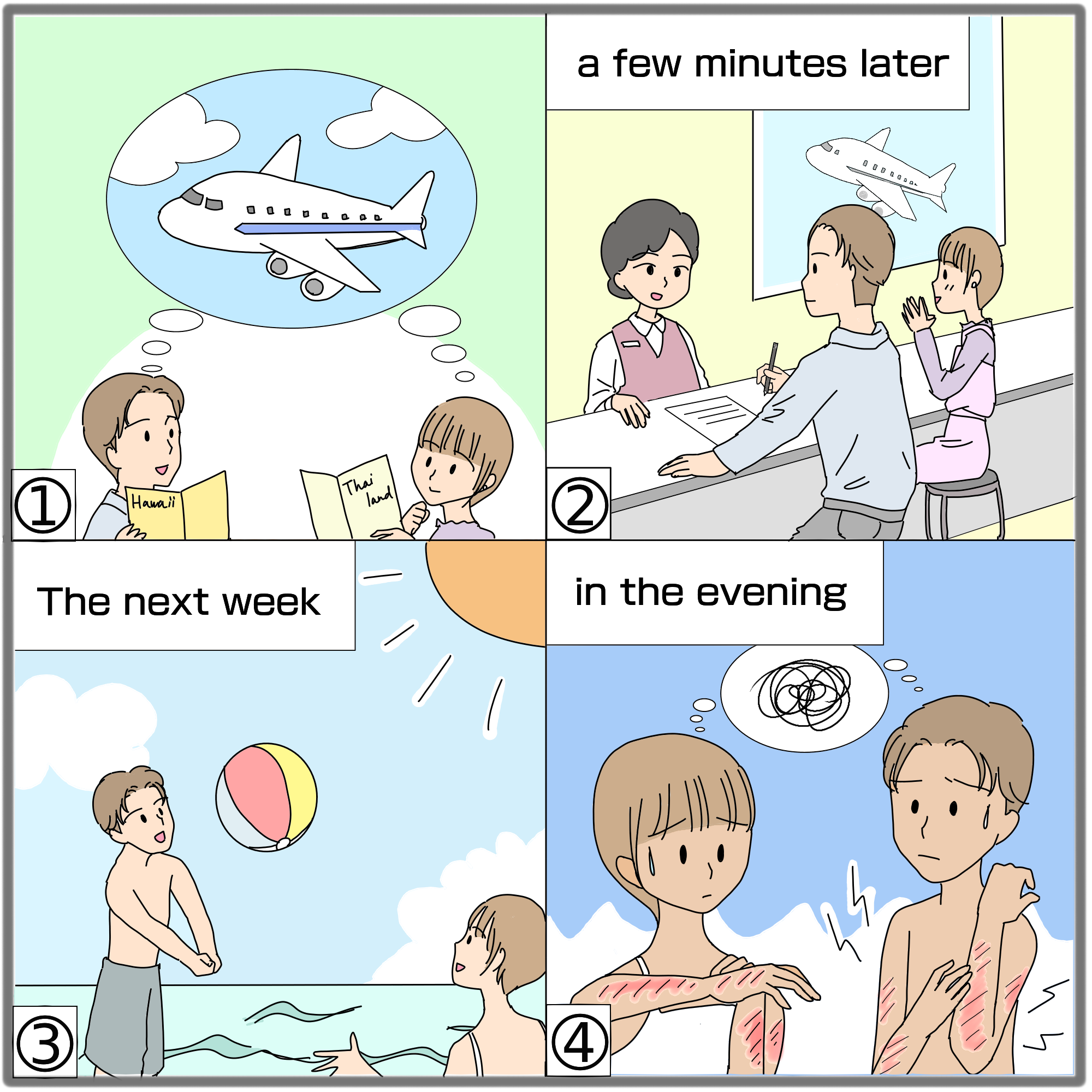PART A_1
Let’s learn new vocabulary. Listen and repeat these words with your tutor.
単語を学習しましょう。講師のあとについて音読してみましょう。
PART A_2
| 1. outgoing call 発信 | |
| The new hotel records a hundred outgoing calls each day. | |
| 2. client 顧客、クライアント | |
| I will meet my client today so he can sign the deal. | |
| 3. province いなか | |
| Compared to the city, the province has more trees and the air is fresher there. | |
| 4. long-distance 長距離 | |
| My friends and I are going on a long-distance ride, from Los Angeles to San Francisco. | |
| 5. call history 通話履歴 | |
| I looked at my phone’s call history. Most of the phone calls I made were for pizza delivery. | |
PART B_1
Let’s learn today’s phrases. Read the sentences below.
会話表現を学びましょう。以下の文章を音読してみましょう。
PART B_2
Can you help me make an outgoing call?
電話をかけたいのですが、どうすればいいですか?
How much does it cost?
料金はどれくらいかかりますか?
PART C_1
Let’s read the dialogue. After that, we’ll switch roles.
以下の会話文を読みましょう。終わったら交代してもう一度読みましょう。
PART C_2
Front desk
Good afternoon. This is the front desk.
|
Risa
Hi, good afternoon. Can you help me make an outgoing call?
|
|
Front desk
Right away, ma’am. May I ask where you want to call?
|
|
Risa
I need to call a client in the province.
|
|
Front desk
Okay, ma’am. You can call now. Just press 9.
|
|
Risa
Okay, thank you.
|
|
Risa makes an outgoing call to the province
|
|
Risa
How much would that cost?
|
|
Front desk
It’s a long-distance call ma’am so your total is $8.00
|
|
Risa
Okay. Could you give me my outgoing call history?
|
|
Front desk
Yes ma’am. We will hand it to you when you check out.
|
|
Risa
Thank you.
|
PART D_1
Let’s read the dialogue. Read aloud, and fill in the blanks as you remember the sentence you just read.
以下の会話文を読みましょう。先ほど読んだ文を思い出しながら、空欄を埋めて音読しましょう。
PART D_2
|
Front desk
Good afternoon. This is the front desk.
|
|
Risa
Hi, good afternoon. Can you help me make an _________?
|
|
Front desk
Right away, ma’am. May I ask where you want to call?
|
|
Risa
I need to call a _____in the ________.
|
|
Front desk
Okay, ma’am. You can call now. Just press 9.
|
|
Risa
Okay, thank you.
|
|
Risa makes an outgoing call to the province
|
|
Risa
How much would that cost?
|
|
Front desk
It’s a_________ call ma’am, so your total is $8.00
|
|
Risa
Okay. Could you give me my outgoing call_______?
|
|
Front desk
Yes ma’am. We will hand it to you when you check out.
|
|
Risa
Thank you.
|
PART E_1
Let’s read the dialogue. Read aloud, and fill in the blanks with the vocabulary and expressions you learned.
以下の会話文を、習った表現や単語を使って穴を埋めながら読みましょう。
PART E_2
|
Front desk
Good afternoon. This is the front desk.
|
|
Risa
Hi, good afternoon. I need to call a client in the province. Could _____________________?
|
|
Front desk
Right away, ma’am. You can call now. Just press 9.
|
|
Risa makes an outgoing call to the province
|
|
Risa
How much would that cost?
|
|
Front desk
Your total is $9.
|
|
Risa
Why so?
|
|
Front desk
It’s a_________ call ma’am.
|
|
Risa
Oh, right. Of course.
|
|
Risa
I would also like to get my outgoing__________. Thank you.
|
|
Front desk
We’ll send it to you when you check out ma’am.
|
PART F_1
Let’s do a roleplay. Talk with me according to the situation below, using the expressions you just learned.
ロールプレイをしましょう。以下のシチュエーションに沿って、講師と話をしましょう。この時、今日習った表現を使ってみましょう。
PART F_2
You want to wish your friend a happy birthday. Call the front desk of your hotel and ask for help with making an outgoing call. Your tutor will act as the front desk staff.
友人に誕生日のお祝いをしてあげようと思っています。ホテルのフロントに電話して、発信の仕方を教えてもらいましょう。講師がフロントスタッフとして対応します。
PART F_3
PART F_4
You are about to check out your hotel. Call the front desk and ask for details about your outgoing call history. Your tutor will act as the front desk staff.
ホテルをチェックアウトしようとしています。フロントに電話して、発信履歴の詳細を聞いてみましょう。講師がフロントスタッフとして対応します。
PART F_5
PART G_1
Let’s review today’s phrases with your tutor. Read the sentences below.
今日習った会話表現を復習しましょう。下記の文章を読み上げてください。
PART G_2
Can you help me make an outgoing call?
電話をかけたいのですが、どうすればいいですか?
How much does it cost?
料金はどれくらいかかりますか?
REVIEW AND FEEDBACK
Now, let us review the things that you learned in this lesson.
ではこのレッスンで学んだことを振り返りましょう。
(Please give a short feedback on how your student did in your class.)
| Grammar 文法 |
Pronunciation 発音 | Vocabulary 単語 |
Comprehension 理解 |
|
|---|---|---|---|---|
 GOOD GOOD |
文法の誤りはほとんどなく、完全な文章で話すことができる | ほとんどの単語をはっきりと正しく発音することができる | 習った表現を適切に使うことができる | 文章を理解し、質問に正しく答えることができる |
 FAIR |
文法の誤りはあるが、完全な文章で話すことができる | 発音の練習が必要な言葉がいくつかある | たまにミスはあるが、習った表現を適切に使うことができる | 文章を完全に理解するのは難しく、質問に正しく答えられないときもある |
 POOR |
文章で話すのは難しく、単語だけで話すことができる | 発音の練習が必要である | 習った単語と表現を少しだけ使うことができる | 文章を理解するのは難しく、質問に答えるのは難しい |







